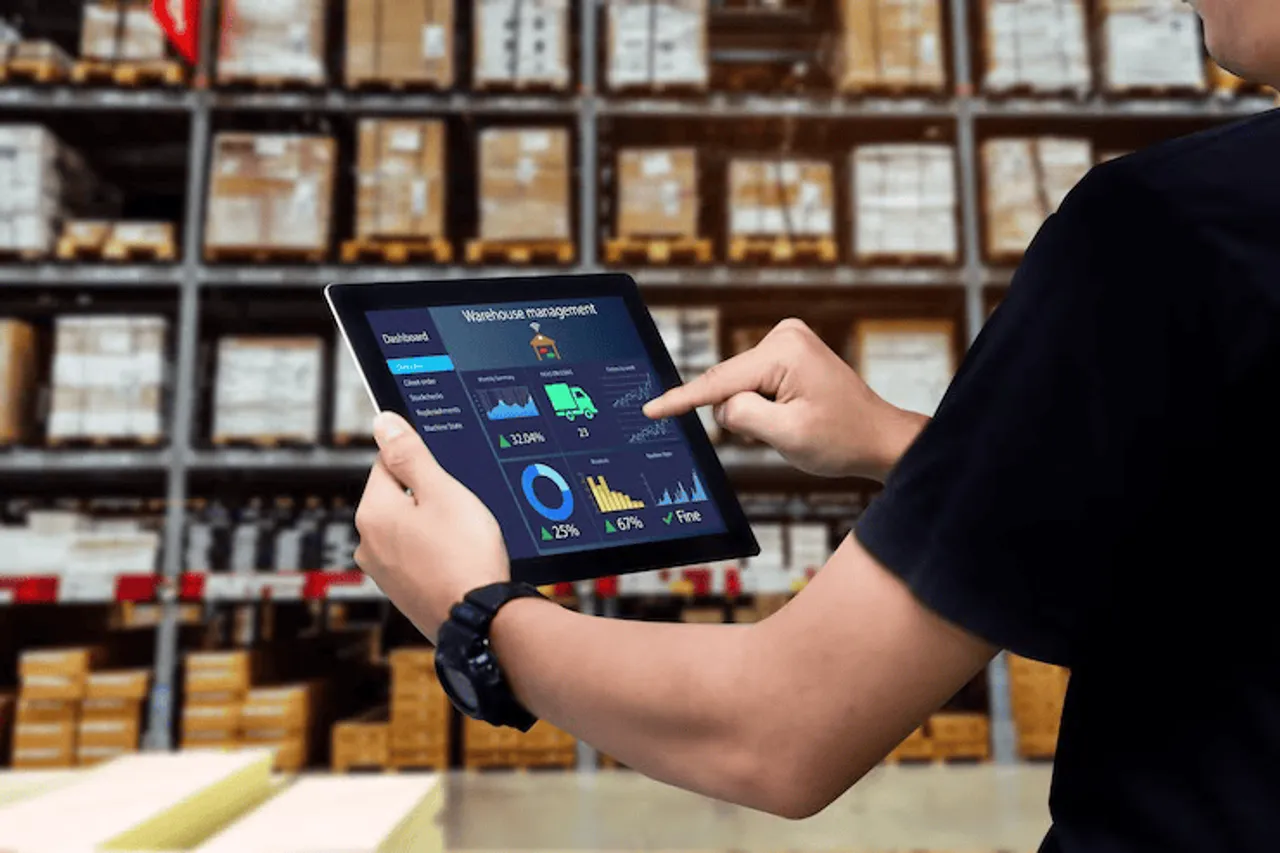Inventory chaos is one of the silent killers of ecommerce businesses. From unexpected stockouts to overwhelming excess inventory, poor inventory management leads to lost sales, frustrated customers, and strained cash flow.
According to a McKinsey report, 75% of ecommerce businesses lose revenue annually due to inventory errors — whether from stock mismanagement, inaccurate forecasting, or slow supply chain coordination.
In today’s competitive landscape, simply keeping stock levels updated is no longer enough. To win in ecommerce in 2025 and beyond, businesses must shift from manual guesswork to AI-powered inventory management — a system that predicts, adapts, and optimizes automatically.
This blog will explore how AI is reshaping inventory control and why embracing it could be the smartest move your ecommerce store makes this year.

What Is AI-Driven Inventory Management?
AI-driven inventory management refers to using artificial intelligence and machine learning algorithms to predict demand, optimize stock levels, automate replenishment, and streamline supply chain operations.
Unlike traditional manual tracking or rule-based systems, AI doesn’t just react to changes — it learns from data patterns, foresees future demand, and adjusts inventory strategies accordingly.
In short, AI turns inventory management from a reactive headache into a proactive powerhouse.
Common Inventory and Supply Chain Problems Ecommerce Brands Face
Managing inventory manually or with outdated systems creates a series of costly challenges:
-
Stockouts: Running out of best-selling products means lost sales and disappointed customers.
-
Overstocking: Holding too much unsold inventory ties up cash flow and increases warehousing costs.
-
Forecasting Errors: Poor demand forecasting leads to either understocking or overspending on inventory that won't move.
-
Supply Chain Inefficiencies: Delays in supplier communication, slow shipping, and manual order processing cripple fulfillment speed.
Without a smarter system in place, these problems compound as your business scales.

How AI Solves These Problems and Brings Control
AI-driven inventory management systematically attacks and solves these common ecommerce challenges:
-
Accurate Demand Forecasting: AI analyzes vast datasets, including historical sales, seasonal trends, and even external factors like economic shifts, to predict demand with remarkable accuracy.
-
Real-Time Stock Optimization: Instead of static reorder points, AI dynamically adjusts restocking needs based on live sales data.
-
Supply Chain Disruption Detection: AI can predict and alert you about potential supply chain delays based on real-time shipping and supplier data.
-
Smarter Replenishment: AI automatically triggers purchase orders or stock movements based on predictive needs — reducing human error.
By proactively managing inventory, AI transforms chaos into a well-orchestrated system that supports rapid ecommerce growth.
Key Benefits of Using AI for Inventory Management
Reduced Stockouts and Overstock
Traditional inventory management methods rely heavily on historical data or intuition, often resulting in costly stockouts or excessive inventory. AI-driven models, however, continuously analyze sales data, market trends, and even external factors such as weather and local events, providing highly accurate inventory predictions.
Specifically, AI-powered inventory solutions:
-
Minimize Stockouts: AI systems detect surges in demand early, prompting timely replenishment actions. This ensures your inventory consistently meets consumer demand, preventing missed sales opportunities.
-
Prevent Overstocking: By precisely forecasting product demand, AI significantly reduces surplus inventory, freeing valuable warehouse space and improving cash flow efficiency.
Ultimately, AI helps you maintain the ideal inventory balance, ensuring operational efficiency and higher profitability.
Faster, More Reliable Fulfillment
With AI-enabled inventory management, fulfillment becomes quicker and more reliable due to increased visibility and proactive inventory handling:
-
Real-time Stock Visibility: AI ensures accurate inventory tracking across all channels, significantly reducing the likelihood of fulfillment errors or order delays.
-
Optimized Warehouse Layout: AI analyzes product movement data to strategically position fast-moving products within easy reach, streamlining the fulfillment process.
-
Enhanced Accuracy: By automatically updating inventory data, AI reduces human errors in order fulfillment, significantly decreasing returns due to incorrect shipments.
These incremental improvements result in higher customer satisfaction, increased repeat purchases, and overall stronger brand loyalty.
Better Demand Forecasting
AI-driven forecasting does not merely analyze past sales; it anticipates future consumer behaviors and market trends, giving businesses a powerful predictive advantage:
-
Advanced Predictive Analysis: AI algorithms leverage vast, complex data sets to accurately forecast product demand during peak seasons, promotions, or unexpected market changes.
-
Real-Time Adaptability: AI quickly recognizes and responds to sudden shifts in consumer preferences or viral product trends, ensuring that you never miss a sales opportunity.
-
Improved Strategic Planning: Accurate forecasts help optimize budgeting, marketing strategies, and resource allocation, enhancing overall operational planning efficiency.

How to Implement AI-Driven Inventory Management in Your Store
Implementing AI into your inventory management might seem intimidating, but a structured approach simplifies the process:
Start with Centralized Inventory Tracking
Before integrating AI, it's crucial to centralize your inventory data from all sales channels:
-
Consolidate Inventory Data: Use tools such as Shopify Plus, Skubana, or Inventory Planner to create a unified, real-time inventory view across your ecommerce website, physical stores, and marketplaces.
-
Automate Synchronization: Ensure your inventory updates instantly across platforms whenever products are sold, maintaining data accuracy.
Integrate AI-Based Forecasting Tools
After centralizing data, introduce specialized AI tools to enhance demand forecasting:
-
Utilize AI-powered platforms: Solutions like Inventory Planner, Linnworks, or Brightpearl integrate seamlessly, continuously learning from your inventory data to automatically refine forecasts.
-
Automatic Replenishment Recommendations: AI tools proactively suggest inventory adjustments based on real-time insights rather than static reorder points.
Automate Replenishment and Stock Alerts
Finally, leverage AI to automate restocking and inventory alerts effectively:
-
Dynamic Inventory Thresholds: AI establishes smart, dynamic reorder points based on predictive modeling instead of fixed thresholds.
-
Automatic Reordering: AI-driven systems trigger automatic restocking when inventory levels fall below forecasted demand, reducing manual effort and minimizing errors.
Real-World Examples of Brands Thriving with AI Inventory Management
Fashion Brand – Reduced Stockouts by 30%
A mid-sized fashion retailer integrated an AI-driven forecasting system into their Shopify platform. Within just six months:
-
30% Reduction in Stockouts: Thanks to accurate demand prediction and timely replenishments suggested by AI.
-
20% Improvement in Fulfillment Speed: Enhanced warehouse efficiency through optimized inventory allocation.
-
15% Increase in Repeat Customers: Improved customer satisfaction driven by consistent product availability and faster order fulfillment.
Electronics Retailer – Lowered Dead Stock by 25%
A consumer electronics brand leveraged AI to proactively identify slow-moving products, enabling them to run targeted promotions before items became obsolete:
-
25% Reduction in Dead Stock Inventory: By proactively managing inventory, they significantly reduced obsolete products.
-
Improved Cash Flow: Lowering dead stock freed warehouse space and optimized cash flow, enabling more strategic investment in fast-moving inventory.
Challenges to Watch Out For When Using AI
While the benefits are substantial, there are challenges to navigate:
-
Data Quality Matters: AI only works as well as the data you feed it. Dirty, incomplete, or outdated data will lead to poor predictions.
-
Initial Implementation Cost: Investing in AI solutions and training staff can be costly upfront, though ROI is often achieved within months.
-
System Integration: AI tools must integrate smoothly with your ecommerce platform, ERP, CRM, and logistics systems to realize full value.
Addressing these hurdles early will ensure that your AI inventory journey succeeds.
Conclusion:
Inventory chaos is no longer an inevitable side effect of ecommerce growth. Thanks to AI, businesses can now control their stock, forecast demand precisely, fulfill faster, and reduce waste — all while delivering superior customer experiences.
In 2025 and beyond, AI-driven inventory management won’t just be a competitive edge — it will be a requirement to survive and scale.
Whether you’re a growing Shopify brand or a global ecommerce powerhouse, the message is clear:
Adopt AI, master your inventory, and watch your ecommerce business thrive.













